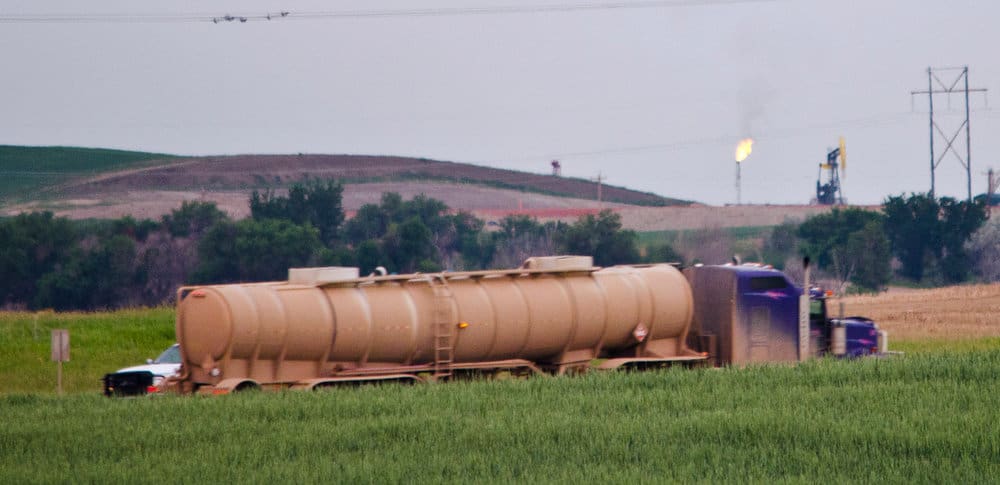
The boost in one sector of the economy ultimately leads to boosts in other sectors, either directly or indirectly. This is the case with oil extraction in North Dakota and it has helped drive the growth of trucking services in that region and nearby Canada.
And it all starts with fracking. Fracking is the breaking up of the underground formations with the aim to release oil and gas that are trapped in small spaces of rocks that are impermeable. The fracking technique is done by pumping in three substances: water, chemicals, and sand. The use of the fracking technique has been around in the U.S. and Canada since the early 2000’s when oil companies pioneered the use of multi-stage fracking techniques along horizontal drilling sections in order to get to the oil and gas reserves that are tightly tucked away.
The technology first incited a boom in oil exploration in the U.S before it became popular in Canada. The Bakken formation under towns like Saskatchewan and Manitoba and bordering the U.S. is the largest producing tight oil play in the western region of the country. Fracking technology has enabled drillers to extract over a million barrels of crude oil per day from that region.
Before the advent of this technology, most towns in that region had little to no activity. However, fracking has opened up these small towns to lots of activities.
“My town was dying. This is a full-scale mining operation, and I’m all for it. Now we can get back to work,” Brent Sanford, then mayor of Watford City, a town at the center of the North Dakota oil boom told National Geographic in a March 2013 article titled, “The New Oil Landscape.”
Fracking doesn’t just increase the oil production of a region, it also affects the general living condition of that region and increases revenue generation.
The oil boom in North Dakota has led to the area booming in sectors such as real estate, fast food and restaurant business, trucking services and others. The influence doesn’t just stop at local businesses, but it reverberates on the national level. The oil boom due to fracking has increased the income from oil and gas sector for both the U.S and Canada. This is so profound that other countries like Saudi Arabia and South Africa have implemented similar measures to boost their crude oil production.
The towns in that region like Kindersley, Saskatchewan, have witnessed an increase in population and standard of living. And it has brought with it good paying trucking jobs in North Dakota and the surrounding regions of Canada.
The North Dakota oil boom has benefitted trucking companies like it has the rest of the region. While oil has been explored in the region since the 1940s, it wasn’t until fracking technology came about the region’s oil floodgates opened.
Much of the wealth created from oil is being spent in North Dakota. According to research conducted by the North Dakota State University, the oil and gas industry contributed around $34.25 billion to the economy of the state and the nearby Canadian towns in 2015. Over 50% of the revenue can be attributed to trucking operations. This can be seen by the growth of several top Canadian trucking firms.
RR PLETT TRUCKING
Growth (2010–2015): 781%
Revenue (2015): $10–20 million
TITANIUM TRANSPORTATION GROUP
Growth (2010–2015): 757%
Revenue (2015): $100–250 million
ANDY TRANSPORT
Growth (2010–2015): 431%
Revenue (2015): $20–50 million
HIGHLIGHT GROUP OF COMPANIES
Growth (2010–2015): 383%
Revenue (2015): $50–100 million
LANTRAX NORTH AMERICA LOGISTICS
Growth (2010–2015): 313%
Revenue (2015): $10–20 million
WESTERN FREIGHT SOLUTIONS
Growth (2010–2015): 274%
Revenue (2015): $5–10 million
SAFE N SAVE LOGISTICS
Growth (2010–2015): 271%
Revenue (2015): $5–10 million
As long as the oil boom continues and oil prices recover sufficiently, trucking can expect the boom times to continue.










